hand exercises for stroke patients pdf
Summary
Download our free PDF guide for hand exercises tailored for stroke patients. Easy-to-follow routines to aid in recovery.

Hand exercises are crucial for stroke recovery, improving mobility, strength, and fine motor skills. Regular practice enhances dexterity, while resources like stroke rehab guides in PDF offer structured routines and tips for patients and caregivers to promote recovery effectively.
1.1 Importance of Hand Rehabilitation After Stroke
Hand rehabilitation is vital for stroke recovery, as it restores mobility, strength, and fine motor skills. Regular exercises prevent stiffness, improve blood flow, and enhance awareness of the affected hand. Consistent practice, often guided by resources like stroke rehab guides in PDF, helps patients regain independence and improve their quality of life. Caregivers play a key role in supporting these efforts, ensuring exercises are performed safely and effectively to maximize recovery outcomes.
1.2 Benefits of Regular Hand Exercises
Regular hand exercises offer numerous benefits for stroke patients, including improved dexterity, strength, and fine motor skills. These exercises enhance blood flow, reduce stiffness, and promote functional independence. Consistency in practice, often guided by resources like stroke rehab guides in PDF, fosters long-term recovery. Additionally, exercises like finger flexion and extension, towel wringing, and resistance training can maximize muscle activation, aiding in the restoration of hand function and overall quality of life for patients.
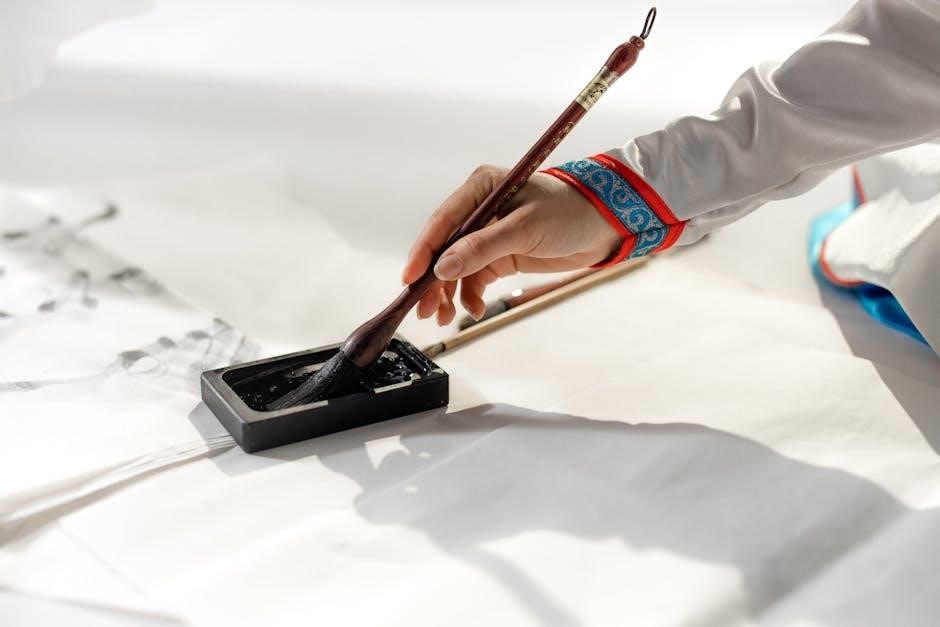
Understanding Stroke and Hand Impairment
Stroke often causes motor impairment, affecting hand function and leading to weakness or paralysis. Hand exercises play a vital role in restoring mobility and strength, aiding recovery.
2.1 How Stroke Affects Hand Function
Stroke often results in motor impairment, impacting hand function by causing weakness, paralysis, or reduced coordination. This can lead to difficulty in performing daily activities, as fine motor skills are compromised. The brain’s inability to communicate effectively with the affected hand disrupts normal movement patterns, making tasks like gripping or manipulating objects challenging. Regular hand exercises, such as finger flexion and extension, can help restore functionality and improve dexterity, aiding in the recovery process and enhancing overall quality of life for stroke patients.
2.2 Common Hand Impairments Post-Stroke
Post-stroke hand impairments often include numbness, tingling, weakness, or paralysis, affecting motor control and dexterity. Spasticity, or excessive muscle tightness, is common, as is reduced coordination and fine motor skills. Some patients experience partial paralysis, limiting hand movement and grip strength. These impairments can hinder daily activities, such as grasping objects or performing precise tasks. Addressing these challenges through targeted exercises and therapies is essential for improving hand function and overall recovery.

Self-Range of Motion Exercises
Self-range of motion exercises help maintain movement, prevent stiffness, and improve blood flow in the affected arm and hand, using the unaffected hand for gentle assistance.
3.1 Gentle Movements for Affected Limbs
Gentle movements are essential for stroke patients to maintain flexibility and prevent stiffness. Using the unaffected hand, patients can guide the affected arm and hand through controlled motions. These exercises improve blood flow and awareness of the impaired limb. Regular practice helps restore mobility and reduces the risk of complications. Consistency is key to achieving progress in recovery and regaining functional use of the affected limbs over time.
3.2 Improving Blood Flow and Preventing Stiffness
Regular hand exercises enhance blood circulation, reducing stiffness and promoting healing. Gentle stretching and range-of-motion activities increase oxygen delivery to affected tissues. These exercises also prevent joint rigidity, maintaining flexibility and mobility. Consistent practice fosters better recovery outcomes, enabling patients to regain functional use of their hands and arms more effectively over time.
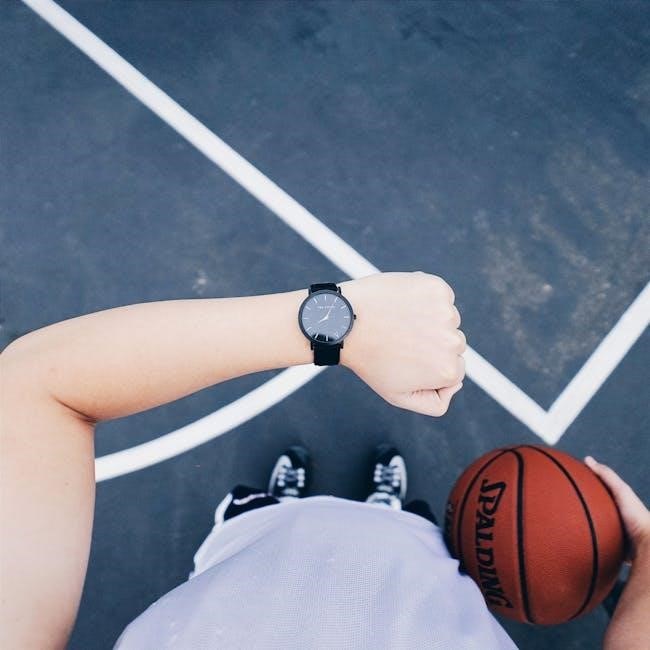
Specific Hand Exercises for Stroke Patients
Targeted exercises like finger flexion, extension, and towel wringing improve hand function. These activities enhance strength, dexterity, and coordination, aiding in stroke recovery when performed consistently.
4.1 Finger Flexion and Extension Exercises
Finger flexion and extension exercises are essential for stroke patients, focusing on bending and straightening fingers to enhance muscle activation. These movements improve forearm musculature strength and dexterity, with studies showing higher muscle activity in both flexor and extensor muscles during flexion exercises. Consistent practice, even with a single resistance level, aids in recovery and motor skill development, making these exercises a cornerstone of hand rehabilitation programs;
4.2 Towel Wringing Exercise
The towel wringing exercise involves placing one hand on each end of a towel and twisting it back and forth, mimicking the action of wringing out a wet washcloth. This exercise enhances hand strength, coordination, and dexterity. Perform 2-3 sets of 5-8 repetitions daily. It is a simple yet effective activity that can be done independently or with assistance, making it a valuable component of stroke rehabilitation programs like the GRASP manual, which emphasizes repetitive and graded exercises for recovery.
4.3 Using Resistance for Muscle Activation
Resistance exercises, such as using light weights or resistance bands, can enhance muscle activation in both flexor and extensor muscles of the forearm. These exercises are particularly effective for chronic stroke patients, as they promote strength and motor control. However, research suggests that a single resistance level may be sufficient, as no significant dose-response relationship was observed between resistance levels and muscle activity during flexion exercises. This approach is often incorporated into structured programs like the GRASP manual to aid in recovery.
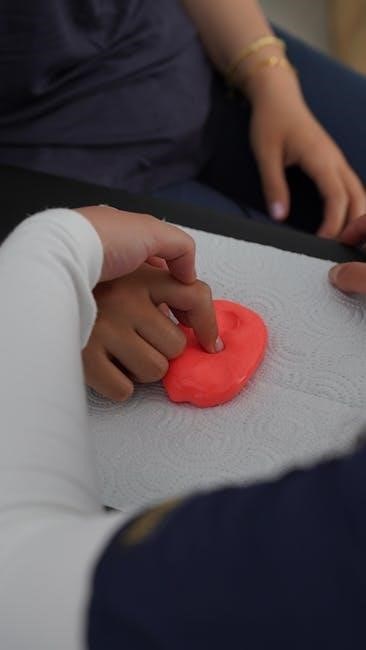
GRASP Program for Arm and Hand Strength
The GRASP program is a graded, repetitive arm supplementary program designed to improve strength, coordination, and daily functionality in stroke-affected arms. Funded by UBC and the Heart and Stroke Foundation, it offers structured exercises to enhance recovery and independence.
5.1 Overview of the GRASP Exercise Manual
The GRASP Exercise Manual provides a comprehensive guide for improving arm and hand strength post-stroke. It includes graded exercises tailored to individual progress, ensuring a structured approach to recovery. The manual emphasizes repetitive practice and offers clear instructions for both patients and caregivers. Funded by UBC and the Heart and Stroke Foundation, it serves as a valuable resource for enhancing functionality and independence in daily activities.
5.2 Role of Caregivers in Assisting Exercises
Caregivers play a vital role in supporting stroke patients with exercises. They assist in organizing equipment, tracking progress, and motivating patients. The GRASP program highlights their importance in encouraging consistent practice and providing emotional support. Caregivers help patients stay engaged, ensuring exercises are performed safely and effectively, which is essential for maximizing recovery outcomes and maintaining patient morale throughout the rehabilitation journey.
Fine Motor Skills Development
Fine motor skills are enhanced through targeted exercises like theraputty and finger dexterity activities. These exercises improve hand strength, coordination, and precision, aiding in daily tasks and recovery.
6.1 Activities to Enhance Dexterity
Activities like picking up small objects (e.g., coins, marbles) and transferring them enhance finger precision. Pinching clothespins, using theraputty, and writing exercises improve fine motor control. Creative tasks such as fruit carving, thread art, and rubber band designs foster dexterity and creativity. These exercises strengthen hand muscles, improve coordination, and restore the ability to perform daily tasks independently, making them essential for stroke recovery and motor skill enhancement.
6.2 Theraputty Exercises for Hand Strength
Theraputty exercises are effective for improving hand strength and dexterity. Patients can roll, flatten, and shape the putty using their fingers, enhancing fine motor skills. These exercises strengthen hand muscles, improve grip, and restore functionality. They are adaptable to varying levels of impairment, making them suitable for both early and advanced recovery stages. Regular practice with theraputty helps stroke patients regain independence in daily activities and fine motor tasks, fostering overall hand rehabilitation and strength.

In-Hand Manipulation Skills
In-hand manipulation involves techniques like translation, rotation, and shift, enhancing object control and fine motor coordination. These skills aid in performing daily activities with precision and ease.
7.1 Translation, Rotation, and Shift Techniques
Translation involves moving objects between fingertips and palm, improving hand-eye coordination. Rotation enhances finger dexterity by turning objects like coins. Shift techniques focus on linear finger movements, aiding in precise control. These exercises, detailed in stroke rehab guides, help patients regain manipulation skills, essential for tasks like writing or using utensils. Regular practice strengthens motor control and independence in daily activities, fostering overall recovery and functional ability.
7.2 Improving Object Manipulation Abilities
Exercises like picking up small objects, such as coins or buttons, enhance finger precision. Using theraputty or pinching clothespins strengthens grip and control. Activities like rolling a pencil or transferring marbles improve dexterity. These tasks, detailed in stroke rehab guides, focus on refining motor skills, enabling patients to perform daily activities with greater ease and independence, thus promoting overall hand function and recovery progress.
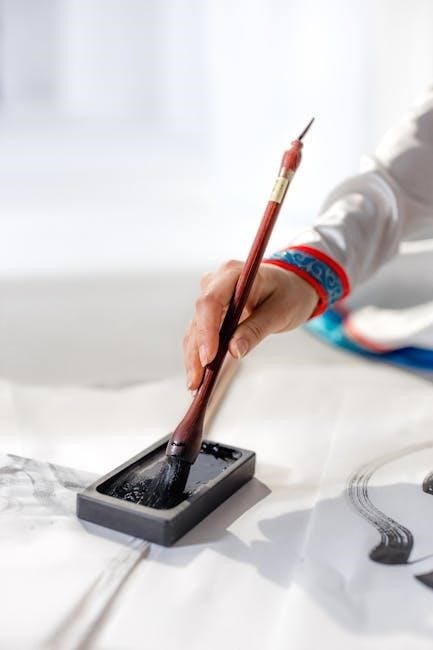
Advanced Exercises for Hand Dexterity
Utilize fine motor apps like Dexteria and Magic Tiles for digital skill enhancement. Engage in creative activities such as fruit carving or thread art to refine precision and coordination.
8.1 Fine Motor Apps and Digital Tools
Digital tools like Dexteria, Magic Tiles 3, and Fruit Ninja offer interactive exercises to enhance finger dexterity and coordination. These apps provide engaging activities such as tracing, puzzles, and games that challenge fine motor skills. They are designed to make therapy enjoyable while improving precision and control. Additionally, digital 3D modeling and creative tasks foster precise mouse or stylus movements, aiding recovery. These tools complement traditional exercises, making practice consistent and fun for stroke patients.
8.2 Creative Activities for Motor Skill Enhancement
Creative activities like fruit carving, thread art, and calligraphy enhance fine motor skills through precise movements. Seed bead mosaics and recycled sculptures challenge dexterity and foster creativity. Rubber band string art improves finger strength and coordination. These engaging tasks make therapy enjoyable while promoting recovery. They encourage patience and artistic expression, providing a sense of accomplishment and motivation for stroke patients to continue their rehabilitation journey consistently.
Role of Caregivers in Hand Rehabilitation
Caregivers play a vital role by assisting with daily exercises, organizing equipment, and providing motivation. Their support helps patients stay consistent, monitor progress, and maintain a positive outlook during recovery.
9.1 Assisting with Daily Exercises
Caregivers can significantly aid stroke patients by helping with daily hand exercises, such as finger flexion and towel wringing. They can organize exercise equipment, provide physical support, and ensure exercises are performed correctly. Encouraging consistency and repetition is key, as these factors are crucial for recovery. Caregivers can also help track progress and maintain motivation, fostering a positive environment for rehabilitation. Their involvement enhances the effectiveness of exercises, promoting better hand function and overall recovery outcomes for stroke patients.
9.2 Motivating and Monitoring Progress
Caregivers play a vital role in motivating stroke patients to adhere to their hand exercise routines. Encouraging small achievements and celebrating progress helps maintain morale. Monitoring exercises through daily logs or checklists ensures consistency and tracks improvement. Providing emotional support and positive reinforcement fosters a motivated environment. Caregivers can also use resources like the stroke rehab guide in PDF to access tips and structured routines, aiding in effective monitoring and promoting long-term recovery outcomes for patients.
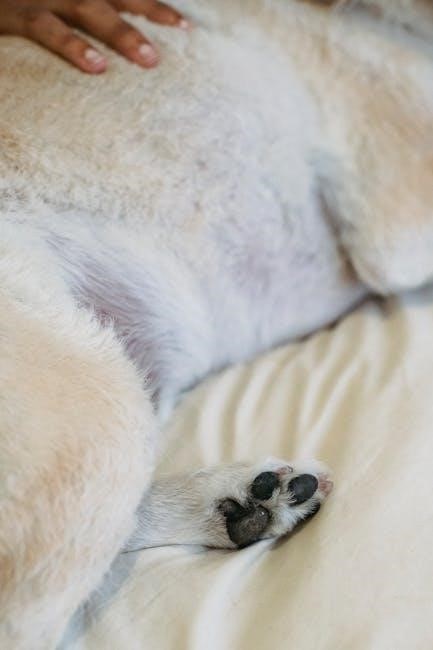
Resources and Guides
A comprehensive stroke rehab guide in PDF offers detailed exercises, Q&A, and prevention tips. Additional resources include newsletters, fine motor skill exercises, and adaptive equipment guides to aid recovery.
10.1 Stroke Rehab Guide in PDF Format
The Stroke Rehab Guide in PDF is a valuable resource for patients and caregivers. It includes detailed information on stroke definition, causes, treatment, and rehabilitation strategies. The guide covers physical, occupational, and speech therapy exercises, with clear pictures for reference. Additionally, it provides Q&A sections from patients and caregivers, adaptive equipment recommendations, and tips on preventing another stroke. This comprehensive guide is designed to support recovery and improve quality of life, offering practical advice and tools for daily use.
10.2 Additional Resources for Patients and Caregivers
Beyond the PDF guide, numerous online resources offer hand exercises tailored for stroke recovery. Websites provide video tutorials, fine motor apps, and adaptive tools. Newsletters like Stroke Recovery Tips share insights, while communities and forums connect patients and caregivers. These resources complement traditional therapy, fostering independence and motivation. They also address lifestyle changes and health monitoring to prevent future strokes, ensuring a holistic approach to recovery and long-term well-being for stroke survivors.
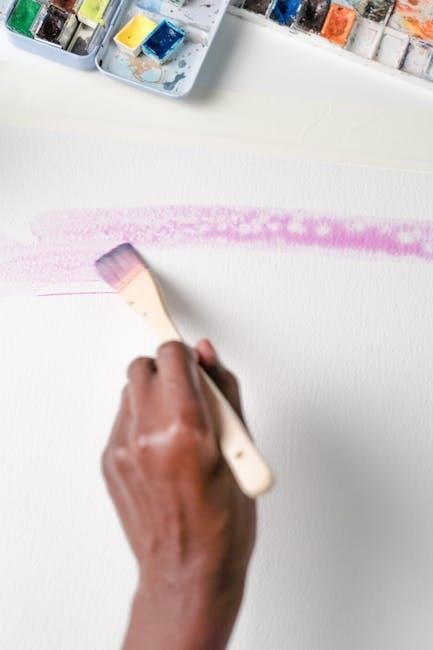
Technology and Devices for Hand Rehabilitation
Emerging neurotechnology and devices like IpsiHand revolutionize hand rehabilitation, offering targeted stimulation and mobility improvements. These innovations enhance recovery, enabling stroke patients to perform daily activities with greater ease and independence.
11.1 Emerging Trends in Neurotechnology
Emerging trends in neurotechnology are transforming hand rehabilitation for stroke patients. Devices like IpsiHand use electrical signals to restore hand function, while spinal cord stimulation improves arm and hand mobility. These innovations enable patients to perform daily activities with greater ease. Additionally, smart textiles and wearable devices are being developed to enhance recovery, offering new hope for stroke survivors to regain independence and improve their quality of life through advanced, targeted therapies.
11.2 Devices Like IpsiHand for Recovery
Devices like IpsiHand are revolutionizing hand rehabilitation for stroke patients. Authorized by the FDA, IpsiHand uses electrical signals from the brain to activate hand muscles, restoring function in disabled hands. These devices empower patients to perform daily activities independently. Emerging technologies, such as wearable devices and smart textiles, further enhance recovery by providing personalized therapy and real-time feedback. Such innovations offer hope for stroke survivors, improving mobility and quality of life through cutting-edge, patient-centric solutions.
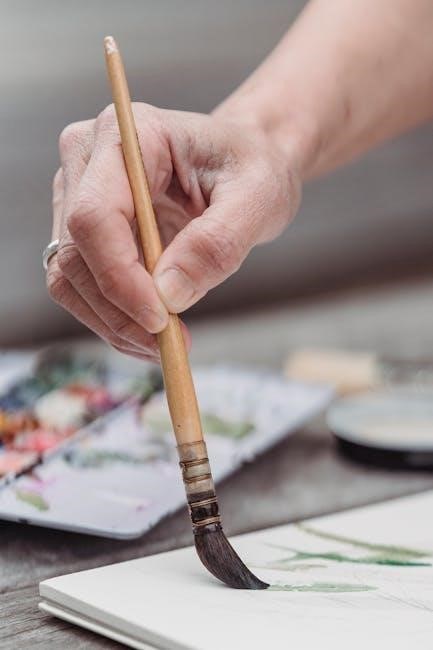
Preventing Another Stroke
Lifestyle changes and monitoring health factors are key to preventing another stroke. Regular exercise, balanced diets, and managing conditions like hypertension can significantly reduce recurrence risks and improve overall well-being.
12.1 Lifestyle Changes for Stroke Prevention
Adopting a healthy lifestyle is essential for stroke prevention. This includes maintaining a balanced diet rich in fruits, vegetables, and whole grains, while limiting sodium and saturated fats. Regular physical activity, such as moderate-intensity exercises, can improve cardiovascular health. Quitting smoking and limiting alcohol consumption are also critical. Managing stress through mindfulness or meditation can further reduce stroke risk. These changes, combined with consistent hand exercises, promote overall well-being and support long-term recovery.
12.2 Monitoring Health Factors
Regular monitoring of blood pressure, blood sugar, and cholesterol levels is vital for stroke prevention. These health factors, when uncontrolled, significantly increase stroke risk. Patients should work closely with healthcare providers to set and maintain target levels. Additionally, staying informed about family health history and managing weight can further reduce risks. Consistent monitoring, paired with adherence to prescribed treatments, supports overall health and complements the benefits of hand exercises during recovery.
Consistent practice of hand exercises, paired with high repetition, is essential for stroke recovery. Utilizing resources like the stroke rehab guide in PDF supports long-term progress and independence.
13.1 Encouraging Consistent Practice
Consistency is key to maximizing the benefits of hand exercises for stroke patients. Daily practice, even for short durations, fosters progress and strengthens motor skills. Caregivers play a vital role in motivating patients, helping them stay committed to their routines. Resources like the stroke rehab guide in PDF provide structured exercises, such as finger flexion and towel wringing, to ensure patients remain engaged and focused on their recovery goals.
13.2 Promoting Long-Term Recovery
Long-term recovery requires a combination of consistent practice, tailored exercises, and caregiver support. Programs like GRASP and tools such as theraputty help patients gradually regain hand function. Incorporating activities like finger manipulation and resistance exercises ensures sustained progress. Caregivers play a crucial role in maintaining motivation and adherence to routines, fostering independence and confidence. Over time, these efforts contribute to meaningful improvements in hand dexterity and overall quality of life for stroke patients.